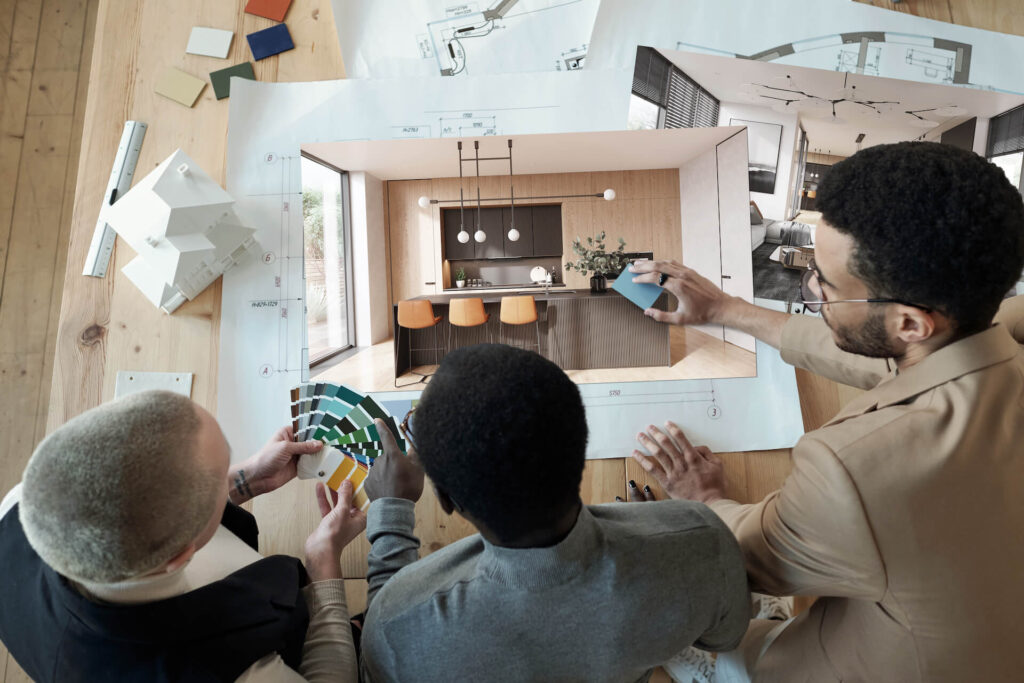
As an interior designer, install day is the grand finale of a project—a culmination of months of planning, designing, and coordinating. It’s also the moment when everything finally comes together. But what happens when a client insists on being present for the installation? This common scenario can complicate things, especially if your goal is to have everything perfect for photos or to provide that satisfying HGTV-style reveal.
Let’s break down how to manage this situation and explore what other designers recommend.
Why Do Clients Want to Be There on Install Day?
It’s perfectly natural for clients to be curious or excited about seeing their vision come to life. After investing time, money, and emotional energy into their home design, clients often feel the urge to witness the final touches firsthand. Watching the space transform from a work-in-progress into a beautifully finished room is exciting.
However, the reality of an installation is not as glamorous as clients might imagine. There’s a lot of behind-the-scenes work that involves moving furniture, adjusting decor, and fine-tuning the overall design. What might look like a messy and chaotic process can quickly worry a client who’s only ever seen the polished version of events on TV.
Setting Boundaries: How to Keep Clients Away on Install Day
One of the best ways to handle a client who wants to be present during installation is to set boundaries well before the install day arrives. Clear communication and professional boundaries protect not only your workflow but also your relationship with the client. Here are a few strategies that can help:
1. Include a “No Peeking” Clause in the Contract
A solid contract should outline every step of the project, including the installation process. Add a clause that clearly states clients should not be present on install day unless previously discussed and agreed upon. This allows you to maintain control over the space and ensures the installation can happen without unnecessary interruptions.
Having this policy in writing ensures that the client knows upfront what the expectations are. Many designers swear by this approach, as it sets the tone for the entire project and leaves little room for misunderstanding later.
2. Send a Polite Reminder Before the Install
A few days before the install, it’s a good idea to send a friendly, professional reminder about the upcoming work. This can include details like the estimated time frame for the installation, what the client can expect afterward, and a gentle reinforcement of the no-peeking policy. Keeping it lighthearted and positive helps ensure the client doesn’t feel left out but also understands why their presence might hinder the process.
For example, you could say something like, “We’re excited to unveil the final product to you! To ensure everything goes as smoothly as possible, we kindly ask that you take the day to relax, and we’ll notify you once the space is ready for its big reveal.”
3. Highlight the Benefits of the Final Reveal
Most clients will appreciate the excitement of a final, fully-staged reveal. Explain to them that seeing the room completed and perfectly styled is far more impactful than watching the process unfold bit by bit. This also keeps them from witnessing any of the mid-install mess, which can cause unnecessary worry.
Explaining that a big reveal moment enhances the overall experience often helps clients understand that their presence during the setup can take away from the magic of seeing the final product.
How to Handle Clients Who Insist on Being Present
Even with all the preparation and clear communication, there are clients who might still insist on being present for the install. When this happens, it’s important to navigate the situation professionally and without creating unnecessary tension.
1. Stay Firm, But Professional
If a client insists on staying despite your contract or polite requests, reiterate how having them present can slow down the process. You can explain that installation is a critical part of your service and requires focus, time, and space to ensure everything goes smoothly. Remind them that you’re working in their best interest and that allowing you to work uninterrupted will ensure the best results.
2. Offer a Compromise
In some cases, offering a small compromise can help keep the client happy without them hovering over the entire process. For example, you could agree on a set time for them to stop by for a quick look once the bulk of the work is done. This gives them a chance to see the progress without getting involved in the more intricate parts of the installation.
3. Assign a Small Task
If the client insists on participating in some way, you might consider assigning them a harmless, non-intrusive task like placing some flowers or adjusting small items. This way, they feel involved, but it won’t interfere with the more technical aspects of your job. This can help maintain a sense of control while also giving them a small role in the final setup.
Insights from the Interior Design Community
Here’s what the interior design community has to say about handling clients who want to be present during installs:
- rdevineinteriors shared, “It’s in my contract, and I always send a cute ‘no peeking policy’ email reminder to clients before install day.” Having the policy written into the contract ensures that everyone is on the same page from the start, and a polite reminder helps set the tone for install day.
- weepingwillowdesign added, “I have it in my contract that clients should plan to spend the day away during an install. I added this after a client followed me around the house while I set up. Not only is it horrible on our nerves, but it takes longer!” Setting clear expectations early in the contract can help avoid unwanted situations.
- cookdesignhouse offered a different perspective: “I actually don’t mind this. I’ve been known to style up shelves while chatting with my clients. They’re usually amazed at how ‘effortlessly’ we pull things together.” For some designers, involving the client can be a positive experience as long as boundaries are respected.
These insights highlight how different designers handle this common situation in ways that best suit their personal style and approach.
Conclusion: Balancing Client Involvement on Install Day
Managing client expectations for install day is a critical part of the design process. Whether you prefer clients to be involved or would rather they stay away, the key to a smooth install is clear communication and setting professional boundaries early on. Including a no-peeking clause in your contract, sending friendly reminders, and emphasizing the excitement of the final reveal can help guide clients in the right direction.
If a client insists on being present, stay firm but polite, offering a compromise where necessary. Ensuring the installation goes smoothly is as much about managing the space as it is about managing relationships, and the more professional and clear you are, the easier this process becomes.



